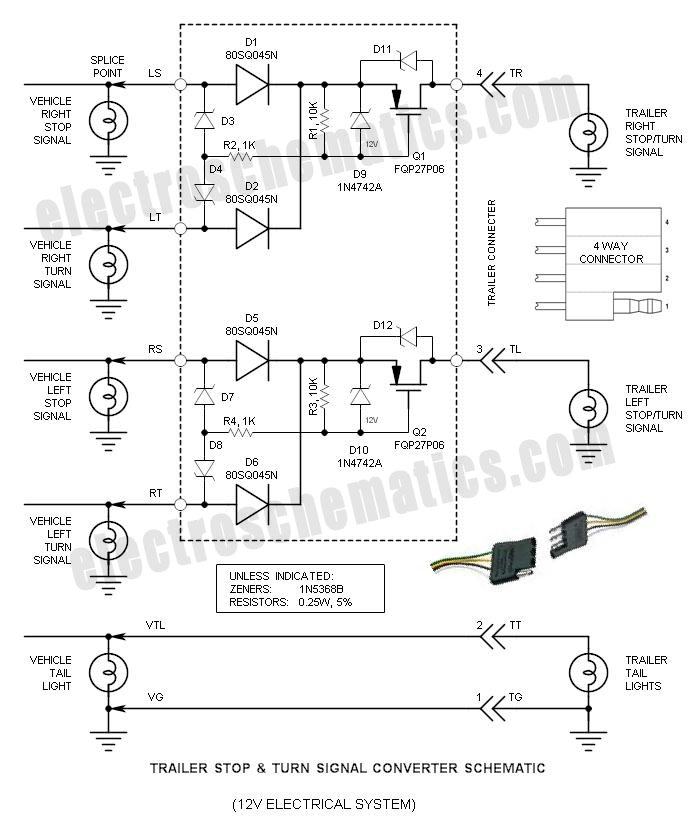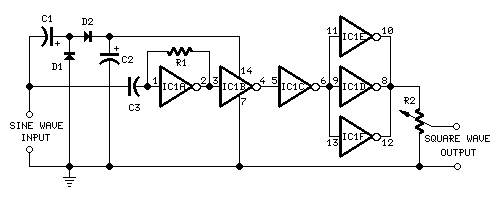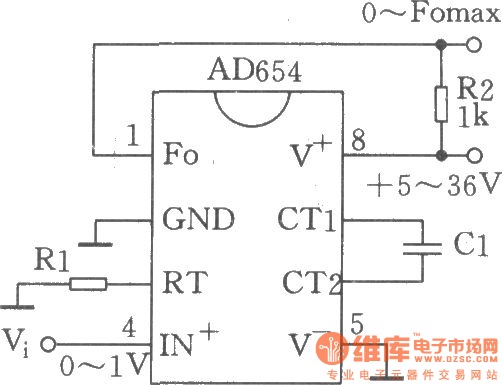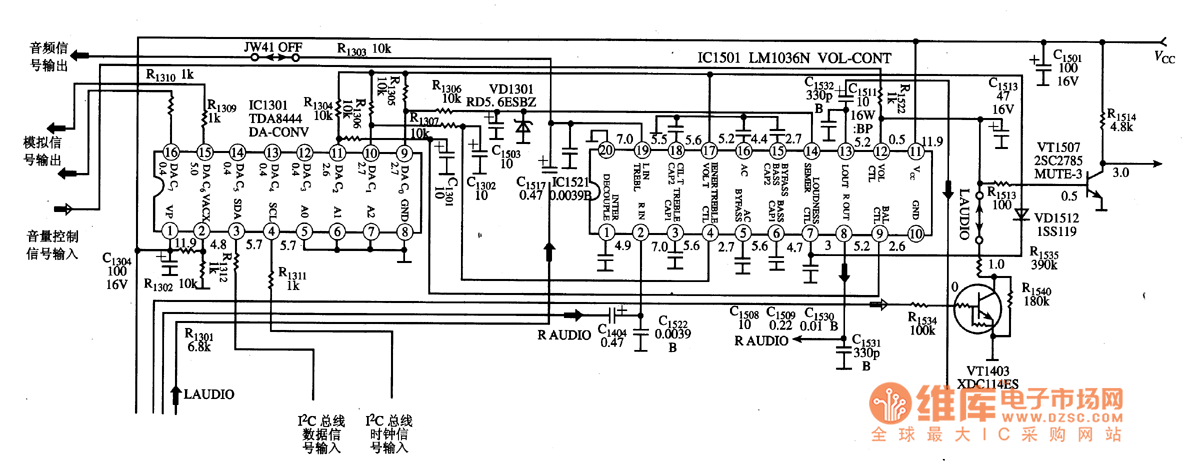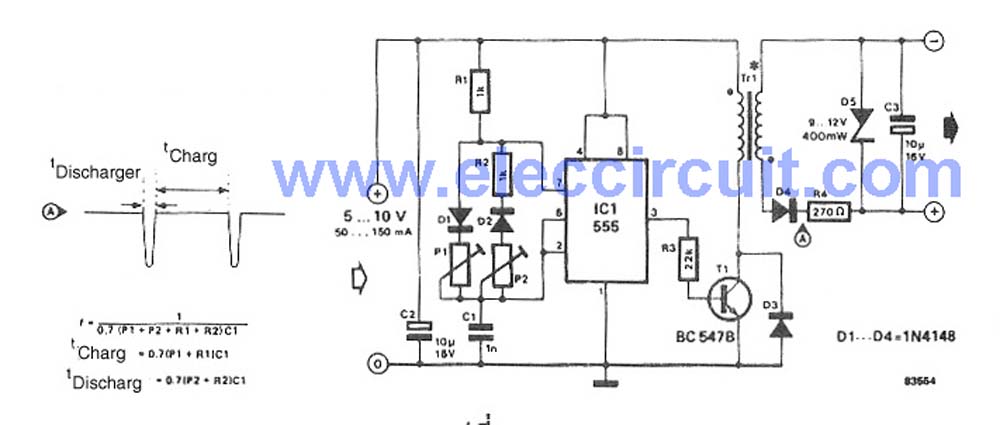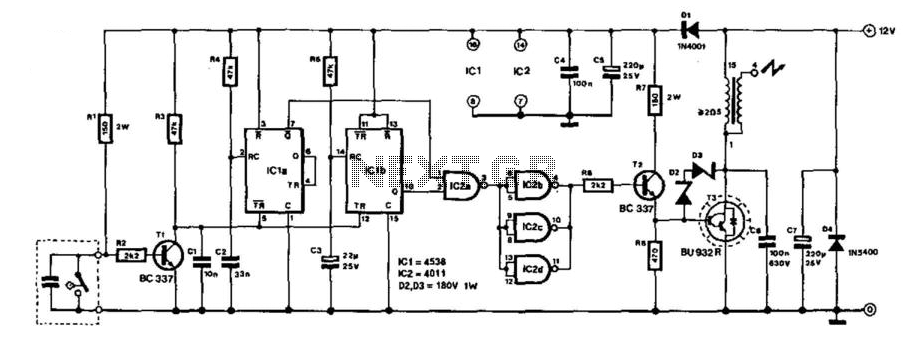
exponential vf converter for electronic music
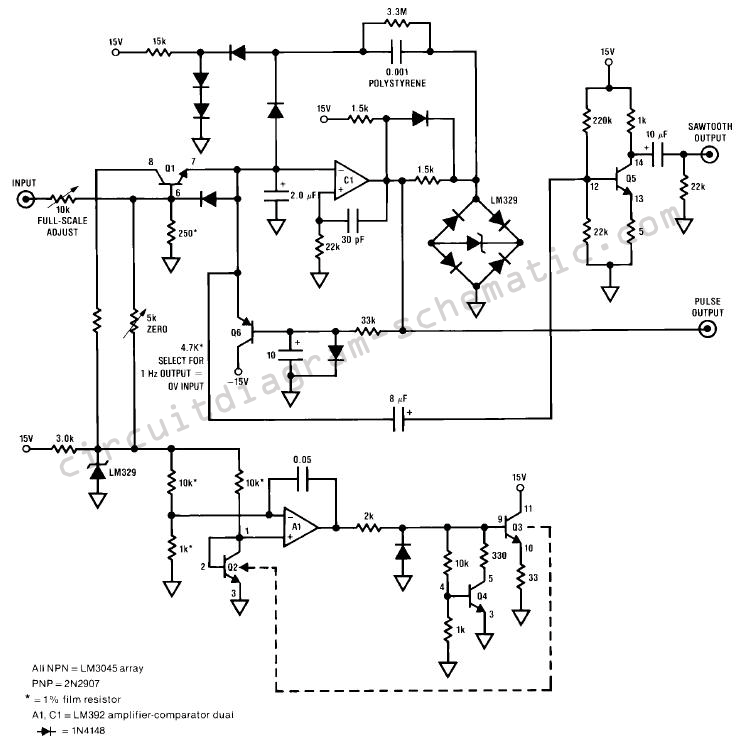
The circuit diagram depicts a design that achieves 0.25% exponential conformity over a frequency range of 20 Hz to 15 kHz using a single LM392 and an LM3045 transistor array. The exponential function is generated by Q1, whose collector current varies exponentially with its base-emitter voltage, following the established relationship between base-emitter voltage and collector current in bipolar transistors. Typically, the operating point of this transistor can fluctuate significantly with temperature, necessitating complex and costly compensation methods. In this design, Q1 is integrated into the LM3045 transistor array, with Q2 and Q3 serving as a heater-sensor pair for A1, which controls the temperature of Q2. This configuration ensures that the entire LM3045 array maintains a constant temperature, thereby eliminating thermal drift issues in the operation of Q1. Q4 functions as a clamp to prevent servo lock-up during the circuit's startup phase. The current output from Q1 is directed into the summing junction of a charge dispensing interface converter. The output state of C1 is utilized to switch a 0.001 µF capacitor between a reference voltage and the input of C1. The reference voltage is provided by an LM329 zener diode bridge. The pulse width of the comparator's output is not critical, as long as it allows for the complete charging and discharging of the capacitor. During operation, C1 drives a combination of 30 pF and 22 kΩ resistors, creating regenerative feedback that reinforces the output direction of C1. As the 30 pF-22 kΩ combination decays, the positive feedback ceases.
The circuit operates primarily through the interaction of the LM392 and the LM3045 transistor array. The LM392 serves as a comparator, which is essential for monitoring the output state of C1 and controlling the switching of the capacitor. The LM3045 array, which includes multiple transistors, is designed to maintain thermal stability, thus ensuring consistent performance across varying environmental conditions. The use of Q2 and Q3 as a heater-sensor pair is critical; their configuration allows for precise temperature control, which mitigates the effects of thermal drift that can adversely affect the exponential function generated by Q1.
The charge dispensing interface converter is a crucial component that translates the current output from Q1 into a usable signal. The integration of the 0.001 µF capacitor with the reference voltage establishes a timing mechanism that allows for accurate signal processing. The LM329 zener diode bridge provides a stable reference voltage, which is essential for the reliable operation of the circuit.
The regenerative feedback loop formed by the 30 pF capacitor and the 22 kΩ resistor is a key feature that enhances the circuit's performance. This feedback mechanism ensures that the output of C1 is reinforced, leading to improved response times and stability in the circuit's operation. As the feedback loop decays, it allows for a reset of the system, preparing it for the next cycle of operation. Overall, this circuit design exemplifies an effective approach to achieving precise exponential conformity across a specified frequency range while addressing potential thermal issues through careful component selection and configuration.The diagrams a circuit which performs this function with 0. 25% exponential conformity over a range from 20 Hz to 15 kHz using a single LM392 and an LM3045 transistor array. The exponential function is generated by Q1, whose collector current will vary exponentially with its base-emitter voltage in accordance with the well known relationship betwee
n BE voltage and collector current in bipolar transistors. Normally, this transistor`s operating point will vary wildly with temperature and elaborate and expensive compensation is required. Here, Q1 is part of an LM3045 transistor array. Q2 and Q3, located in the array, serve as a heater sensor pair for A1, which servo controls the temperature of Q2.
This causes the entire LM3045 array to be at constant temperature, eliminating thermal drift problems in Q1 ²s operation. Q4 acts as a clamp, preventing servo lock-up during circuit start-up. Q1 ²s current output is fed into the summing junction of a charge dispensing I/F converter. Here is s schematic drawing : C1 ²s output state is used to switch the 0. 001 uF capacitor between a reference voltage and C1 input. The reference voltage is furnished by the LM329 zener diode bridge. The comparator`s output pulse width is unimportant as long as it permits complete charging and discharging of the capacitor.
In operation, C1 drives the 30 pF-22k combination. This RC provides regenerative feedback which reinforces the direction of C1 ²s output. When the 30 pF-22k combination decays, the positive feedback ceases. 🔗 External reference
The circuit operates primarily through the interaction of the LM392 and the LM3045 transistor array. The LM392 serves as a comparator, which is essential for monitoring the output state of C1 and controlling the switching of the capacitor. The LM3045 array, which includes multiple transistors, is designed to maintain thermal stability, thus ensuring consistent performance across varying environmental conditions. The use of Q2 and Q3 as a heater-sensor pair is critical; their configuration allows for precise temperature control, which mitigates the effects of thermal drift that can adversely affect the exponential function generated by Q1.
The charge dispensing interface converter is a crucial component that translates the current output from Q1 into a usable signal. The integration of the 0.001 µF capacitor with the reference voltage establishes a timing mechanism that allows for accurate signal processing. The LM329 zener diode bridge provides a stable reference voltage, which is essential for the reliable operation of the circuit.
The regenerative feedback loop formed by the 30 pF capacitor and the 22 kΩ resistor is a key feature that enhances the circuit's performance. This feedback mechanism ensures that the output of C1 is reinforced, leading to improved response times and stability in the circuit's operation. As the feedback loop decays, it allows for a reset of the system, preparing it for the next cycle of operation. Overall, this circuit design exemplifies an effective approach to achieving precise exponential conformity across a specified frequency range while addressing potential thermal issues through careful component selection and configuration.The diagrams a circuit which performs this function with 0. 25% exponential conformity over a range from 20 Hz to 15 kHz using a single LM392 and an LM3045 transistor array. The exponential function is generated by Q1, whose collector current will vary exponentially with its base-emitter voltage in accordance with the well known relationship betwee
n BE voltage and collector current in bipolar transistors. Normally, this transistor`s operating point will vary wildly with temperature and elaborate and expensive compensation is required. Here, Q1 is part of an LM3045 transistor array. Q2 and Q3, located in the array, serve as a heater sensor pair for A1, which servo controls the temperature of Q2.
This causes the entire LM3045 array to be at constant temperature, eliminating thermal drift problems in Q1 ²s operation. Q4 acts as a clamp, preventing servo lock-up during circuit start-up. Q1 ²s current output is fed into the summing junction of a charge dispensing I/F converter. Here is s schematic drawing : C1 ²s output state is used to switch the 0. 001 uF capacitor between a reference voltage and C1 input. The reference voltage is furnished by the LM329 zener diode bridge. The comparator`s output pulse width is unimportant as long as it permits complete charging and discharging of the capacitor.
In operation, C1 drives the 30 pF-22k combination. This RC provides regenerative feedback which reinforces the direction of C1 ²s output. When the 30 pF-22k combination decays, the positive feedback ceases. 🔗 External reference
